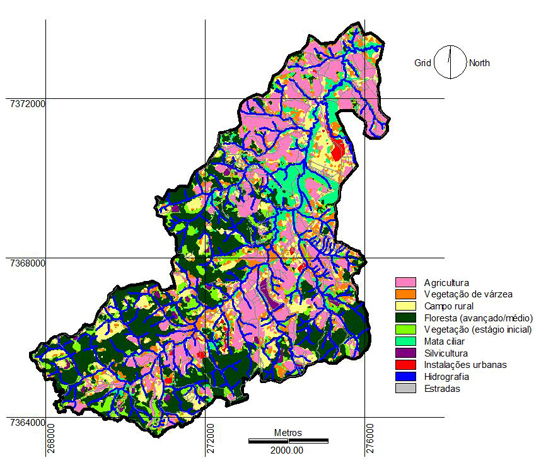Working days for soil management as a function of rainfall and soil moisture in different Brazilian regions
Keywords:
simple and conditional probabilities, Markov chain, soil management
Abstract
The use of machinery in agriculture is increasing. This leads to soil compaction or degradation when the machinery is operated under inappropriate soil conditions, which in turn results in decreasing crop yields. Therefore, the aim of this study was to identify the periods of the year when it is appropriate to use machinery for soil management, as a function of rainfall and soil moisture, in traditional agricultural regions in southern Brazil. The study used daily rainfall and air temperature data from Piracicaba, SP, Passo Fundo, RS, Londrina, PR and Dourados, MS, Brazil. Favorable conditions were calculated considering daily rainfall lower than 5 mm and soil moisture between 40 and 90% of soil water holding capacity. Daily soil water balance was calculated by the Thornthwaite and Mather (1955) method, for a soil water holding capacity of 100 mm, which represents the main soils of the studied regions. The Markov chain was applied and used to calculate the conditional probabilities which were used for estimating the sequential working days in each ten-day period throughout the year. The working days technique is an important tool for determining the most appropriate periods of the year for soil management. The annual rainfall and soil moisture variability was used to identify the periods of the year with low, medium and high suitability for soil management. For the assessed locations, there was a predominance of 11 to 20 working days per month, except for Londrina where up to 10 working days per month predominated.
Published
29/08/2014
Issue
Section
Papers
Authors maintain the copyrights for their work. However, they grant rights of first publication to Ambiente e Agua - An Interdisciplinary Journal of Applied Science. In compensation, the journal can transfer the copyrights, allowing non-commercial use of the article including the right of sending the article to other data bases or publication media. The journal uses the CC BY 4.0 license"






